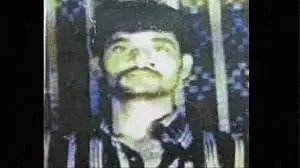From radical student to armed commando: Why Basava Raju’s death is a blow to Maoists

The killing of Basava Raju, a top Maoist commander with decades of guerrilla warfare experience, has dealt a significant blow to the outlawed Communist Party of India (Maoist). Once a radical student drawn into Left-wing ideology, Raju rose through the ranks to become one of the most elusive and dangerous faces of the Maoist insurgency. His death marks a turning point in India’s fight against Left-Wing Extremism (LWE), particularly in the volatile forested regions of Chhattisgarh, Odisha, and Telangana.
The End of a Long Guerrilla Career
Basava Raju, whose real name was Malangir Kiran, was reportedly killed in an encounter with security forces in the dense jungles of Chhattisgarh. For over 30 years, he evaded capture, earning a reputation for being a master strategist and combat leader. His expertise in jungle warfare made him a trusted figure in the Maoist hierarchy. He held the crucial position of Central Committee member and also led the party’s Central Regional Bureau, overseeing operations in key conflict zones.
Security officials describe his death as one of the most significant anti-Maoist successes in recent years. “Raju’s elimination breaks the backbone of Maoist command and control in central India,” a senior paramilitary officer involved in the operation said.
From Student to Revolutionary
Raju’s story mirrors that of many others who joined the insurgency in the 1980s and 90s. He began as a bright student in Telangana, showing an early interest in social justice and Leftist literature. Influenced by campus activism and the prevailing socio-political environment, he joined a radical student group that later introduced him to underground Maoist leaders.
He disappeared from mainstream life in the late 1980s and resurfaced deep in the Dandakaranya forests as a trained guerrilla fighter. His transformation from student activist to full-time cadre was marked by rigorous ideological indoctrination and physical training. Over time, he gained respect among the Maoist ranks as a sharp thinker and ruthless tactician.
The Maoist Movement’s Dependence on Experienced Leaders
The Maoist insurgency, while decentralized in nature, has long relied on a small group of battle-hardened leaders to train new recruits, guide ambush strategies, and maintain ideological discipline. Raju was among the last of this old guard, known for his deep understanding of jungle terrain and guerrilla warfare techniques.
Security agencies believe that Raju played a pivotal role in training younger Maoist cadres in explosive-making, ambush tactics, and communication evasion techniques. His leadership extended beyond battlefields—he was also central to Maoist propaganda and recruitment strategies.
Why His Death Matters Now
Raju’s death comes at a time when the Maoist movement is already under strain. Over the past decade, increased security operations, development initiatives in tribal areas, and splintering within the Maoist ranks have weakened the insurgency. The loss of a senior commander like Raju further disrupts the Maoists’ operational capabilities.
“Basava Raju was the last of the deeply experienced tacticians who could mobilize fighters across regions. With him gone, the Maoist movement may struggle to hold its fragmented command structure together,” said a former security advisor who worked on LWE strategy.
Moreover, his death may demoralize cadres in the Dandakaranya region, a long-standing Maoist stronghold. Intelligence reports suggest that younger cadres have neither the ideological commitment nor the military training of the older generation, making the movement vulnerable to both military and psychological setbacks.
Symbolism and Strategic Setback
Beyond the tactical loss, Raju’s death has symbolic importance. He represented the old-school Maoist leadership that thrived on anonymity, commitment to ideology, and long-term survival in hostile terrain. Unlike recent recruits drawn by local grievances or discontent, Raju and his contemporaries were part of a broader revolutionary dream—one that now seems increasingly fragile.
Security analysts believe this is the right time for the state to push forward with a two-pronged approach: sustained counter-insurgency operations and deeper development initiatives in tribal areas. “You can’t just fight Maoism with bullets. With leaders like Raju gone, there’s a window to engage with disillusioned cadres and provide alternatives,” said a senior official in the Ministry of Home Affairs.
What Comes Next?
The CPI (Maoist) is expected to issue statements condemning the killing and possibly call for retaliatory actions, especially in Chhattisgarh and Telangana. However, without seasoned leaders like Raju, orchestrating large-scale attacks could prove challenging.
Authorities are also likely to intensify their manhunt for other high-ranking Maoist leaders such as Hidma, another elusive commander believed to be active in the Bastar region.
In the short term, Raju’s death will lead to confusion and possible infighting within the Maoist command. In the long run, it may mark the beginning of the end of a movement that once posed a serious internal security threat to the Indian state.
Conclusion
Basava Raju’s journey from a radical student to a guerrilla commander encapsulates the trajectory of India’s Maoist movement—from ideological beginnings to violent confrontation. His death is not just the fall of a leader but potentially a major turning point in the decades-long insurgency. As the state rethinks its approach, this moment could become a watershed in India’s ongoing struggle to bring peace and development to its most remote regions.






